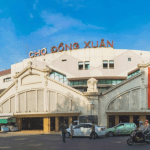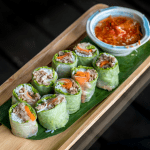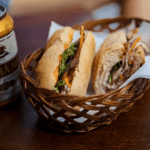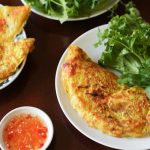by Cassidy Armbruster
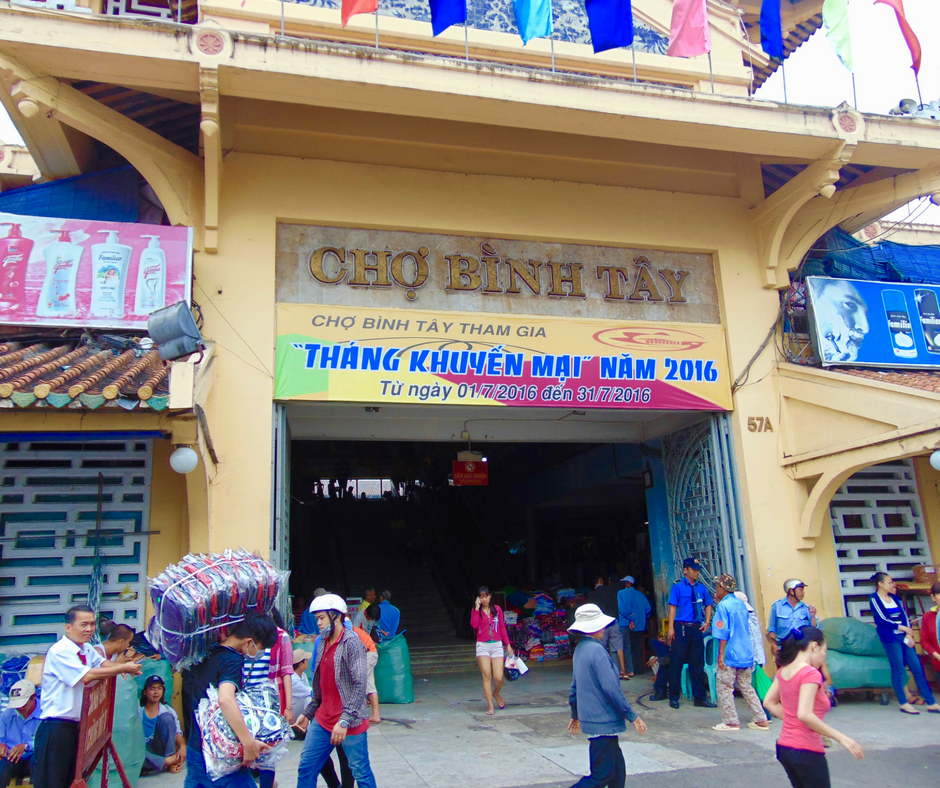
Don’t base your judgement of the Bình Tây market on the way it looks and feels on the outside, because I’ll admit the outside feels jam packed and overwhelming. When you step into what looks like a black hole, you step into a maze of vendors and products. However, unlike Saigon’s Ben Thanh market, these vendors don’t hassle you or grab at your shirt. In fact, most paid no attention to me unless I paid attention to what they were selling. You can find everything at this market, from fresh fruit to dry fruit, flip flops to sneakers, rice in a dish to dry rice in a bag. The products are also sold wholesale, so the products are inexpensive- almost like a Vietnamese Costco.

Similarly, unlike the Ben Thanh market, the Bình Tây market isn’t swarming with hot and frustrated tourists. The Bình Tây market is at the centre of Ho Chi Minh’s district six, which happens to be the largest Chinatown in the world! As you may assume, the market is made up predominantly by Vietnamese-Chinese, and the common language is Cantonese. The Bình Tây market or Cho Lon, as the Vietnamese locals refer to it, was replaced by the “old market” after a fire that completely destroyed the market.
Like most markets, the Bình Tây market is split into sections, making it easier to shop. For example, you won’t find hats being sold in the nuts section of the market. My favourite section that Thanh and I walked through was the section where you purchase offerings to give to the dead. I saw offerings that one would expect to be sold, such as candles, incense, fake flowers, and small statues of chickens. Then I came across large packages of offerings I had never seen before, filled with fake gold watches, bracelets, earrings, and even paper IPhones. These caught me a little of guard, and really intrigued me. Thanh explained that afterlife in Chinese tradition reflects the real world, thus the dead would appreciate an iPhone, gold watch, or bracelet just as much as the living would.

This section of the city is very important to see because of the rich and dark history the Chinese faced and overcame in Vietnam. In the 18th century, much of the Chinese population in Vietnam were persecuted by the Tay Son, and as a response they established their own community of traders and laborers in hiding, preserving their culture by building their own schools and temples. These communities were threatened again in the 1970’s when the Chinese suffered an anti-Chinese campaign in Vietnam. However, as you can see when you visit the district, the Chinese persevered, and today are extremely active and prominent in Vietnamese society.

If your trip is coming to end and you have not yet purchased souvenirs for your friends and family at home, an easy and cheap stop would be the Bình Tây market. Grab a few things in bulk and pass them out at home! If you don’t feel like walking into the market, you can always try our day tour in Saigon where you glide through Chinatown on a Vespa (among many other stops throughout the city). While in Chinatown, we pass by the Bình Tây market, a crowded silk market, a smaller local market, and even stop by a Chinese Pagoda!



